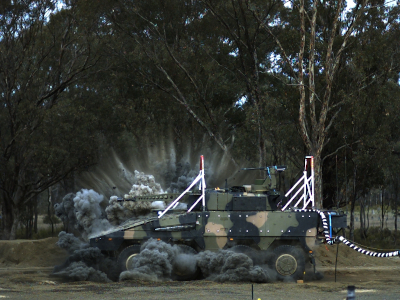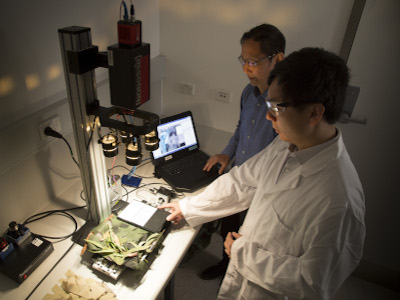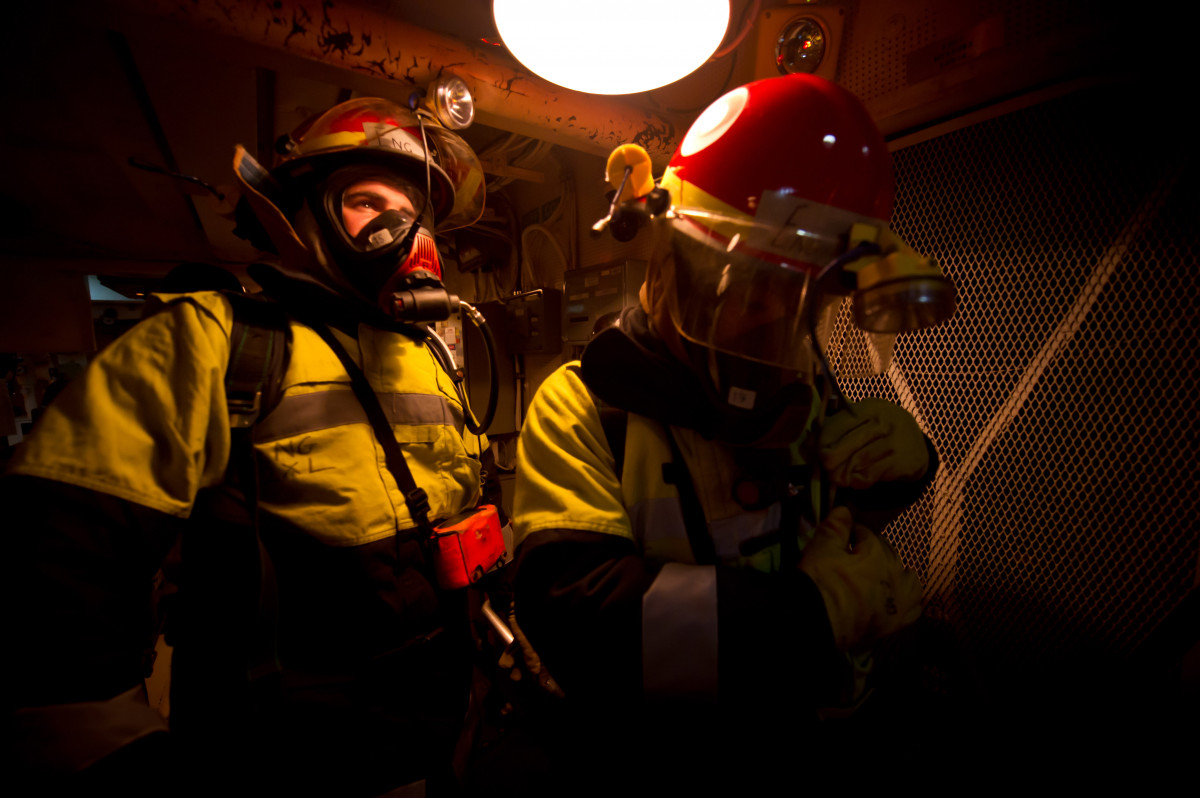Saving lives with STEM

Defence is marking this year's National Science Week by highlighting how science, technology, engineering and mathematics (STEM) keeps Australians safe.
Whether they are designing systems that stop roadside bombs, testing firefighting equipment or studying the virus that causes COVID-19, STEM professionals across Defence are working to keep people safe.
Their expertise helps the Australian Defence Force maintain an edge over potential adversaries. This means ensuring that personnel have the tools they need to complete their missions while harnessing the power of STEM to counter the threats they might face.
But our Defence engineers and scientists do more than support military personnel. They also provide essential science and technology support to enable the Australian Government to respond in the event of a national crisis.
Fighting fires with sensors
During last summer’s bushfire crisis, Defence deployed a research aircraft known as the Defence Experimentation Airborne Platform (DEAP) to monitor fire activity and conduct damage assessments over bushfire-affected areas.
The aircraft is fitted with highly capable sensors that allow the operators to keep an eye on what is happening at a distance from any fires.
Looking ahead to future bushfire seasons, Defence scientists will continue to develop and migrate new military technology to enhance the DEAP’s already impressive ability to see through smoke and haze, offering an even clearer picture of events on the ground.
Rapid face shield and ventilator design
As we all continue to do our bit to deal with the coronavirus crisis, STEM experts from across Defence are engaged in a range of projects that are integral to the nation’s response to the pandemic.
Defence engineers have demonstrated their ability to work quickly to overcome technical challenges. They designed a face shield to protect healthcare workers, and have also developed a device that converts existing non-invasive ventilators into invasive ventilators.
Studying virus survivability
Defence scientists are working with CSIRO and Australia’s international partners to determine how long the virus that causes COVID-19 can survive on different surfaces. A small team from Defence has been collaborating with CSIRO colleagues at the Australian Centre for Disease Preparedness in Geelong.
This research effort is assessing the survivability of SARS-CoV-2 on materials such as glass, metal and plastic, as well as on banknotes. Scientists are also studying the influence of environmental factors on virus survival, including temperature and humidity.
As part of the same project, they are working out how best to decontaminate surfaces, including evaluating the effectiveness of household cleaning products. The scientists are also investigating how special coatings could be applied to frequently touched surfaces to reduce the risk of virus transmission.
Enhancing protection for military personnel
Defence scientists are constantly looking for innovative ways to enhance the equipment that protects Australian military personnel, from the body armour and helmets they wear to the armoured vehicles they patrol in.
These research efforts include assessments of the properties of different materials whose use might improve the level of protection provided while minimising weight.
Some studies involve novel ways of collecting data, given how difficult it can be to gather information in a conflict zone. For instance, analysing trauma data from civilian hospital patients has shed light on how extreme forces affect the human body, providing valuable information that will be used to improve the design and testing of military vehicle seats.
Simulating explosions
Ensuring that armoured vehicles are up to the task of protecting military personnel means testing them in conditions that are as close to the real thing as possible.
But while blowing up a vehicle to evaluate the performance of its armour is crucially important, live-fire blast tests take a long time to organise and are expensive to run. That is why Defence scientists that specialise in vehicle survivability research spend a lot of their time running computer simulations.
They have adopted computer modelling approaches used in the aerospace and automotive industries and adapted them to meet the unique requirements of their blast and ballistic protection projects.
Keeping personnel out of harm’s way
Harnessing technology to protect military personnel goes far beyond equipping them with better armour, as important as this is. Defence uses a layered approach to protection that in the first instance seeks to avoid directly exposing humans to danger.
This can be achieved by using robotic systems. For example, uninhabited underwater vehicles can be deployed to carry out the dangerous task of hunting for naval mines.
Avoiding detection across the spectrum
If military personnel do need to be directly exposed to danger, the next layer of protection is avoiding detection. This is achieved through signature management across the electromagnetic spectrum.
Defence scientists are building up a database of hyperspectral imaging data to support the development of next-generation camouflage. This will enable personnel to evade advanced sensors that can pick up reflected and emissive energy from right across the spectrum.
Ensuring protective equipment protects
A critically important task for STEM professionals across Defence is rigorously testing protective equipment to make sure it will function as required. For instance, ground crew need to be equipped with a firefighting ensemble so they can safely respond to hazardous situations at airbases – such as dealing with a hung flare.
Military aircraft deploy flares that burn at extremely high temperatures to counter heat-seeking missile threats. But if something goes wrong and a flare gets stuck in the release tube, specially trained crew have to handle it when the aircraft lands.
Defence scientists have used an instrumented mannequin to assess the performance of a new firefighting ensemble and a range of helmets under simulated hung flare conditions to ensure that ground crew would be adequately protected.
Safeguarding ships against fire
Fire is an ever-present danger across different military platforms, including aboard naval vessels.
Defence scientists combine a number of approaches to conducting fire scenario analysis research, from computer modelling to experimenting with scale models, in an effort to protect vessels and their crews.
They are working to determine how to improve the ventilation process for clearing out toxic particles from a compartment of a ship following a fire. Other areas of work include evaluating fire-resistant materials and assessing different types of fire-suppression systems.
The outcomes of fire-related research projects feed into a wider model of platform survivability that is intended to make naval vessels as safe as possible for the crews that serve on them.
Defeating roadside bombs
Defence scientists have a long history of developing countermeasures to neutralise the threat posed by improvised explosive devices (IEDs), commonly known as roadside bombs.
Under a program called REDWING, they have designed a number of systems that counter radio-controlled IEDs specifically to protect personnel in Afghanistan.
Working with Australian industry, Defence is providing the Afghan National Defense and Security Forces with life-saving technology. The latest system in a line of products developed under the REDWING program is known as SILVERSHIELD; it protects vehicles and their occupants by jamming radio signals to prevent IEDs being set off remotely.
From conflict zones to fire-ravaged bushland, from developing protective equipment to studying the virus that causes COVID-19, our STEM professionals are working hard to keep us safe.
Defence is a proud participant of National Science Week, celebrating and acknowledging the contribution that our STEM workforce makes to the capabilities of our Defence Force and the security of the country. Check out #STEMsavinglives.




